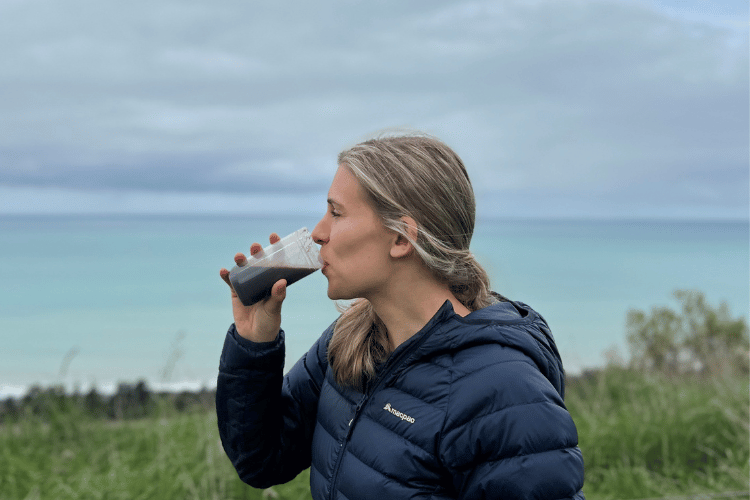After finishing a refreshing jog around the block, with sweat on your forehead and an ache in your muscles, you find yourself in the kitchen. As you stand there, a familiar grumble sounds from your stomach, and you wonder — what should I eat to help me benefit the most from that workout?
Whatever your exercise routine, it’s important to consume the right nutrients at the right time to get more bang for your buck, and we’ve helped to break it down in this article.
First, there are the three macronutrients essential for optimal health: carbohydrates, proteins, and fats. Secondly, there are micronutrients, which are equally vital but needed in smaller quantities.
All macro and micronutrients play important roles in enhancing your physical performance and easing recovery — it's knowing what to eat (and when) that can make all the difference.
Pre-game: what to eat beforehand
Generally, a combination of carbohydrates and protein is a good start to ensure your energy levels are sustained throughout your workout. This could look like a slice of wholemeal toast with a tablespoon of almond or peanut butter, chicken breast with rice and steamed vegetables, porridge, or a smoothie with protein powder. Ideally, waiting 2-3 hours between eating and exercise is a good idea to avoid unwanted cramps and discomfort.
What you should eat before a quick 20-minute workout is different from what you should eat before a 15km run. Apples, bananas, and oranges are great for a short workout, as fruit is energising and easy to digest.
When endurance training, consuming complex carbohydrates before exercising (such as whole grains) ensures that your body will have enough energy to help it perform over a long period of time.
Hydration station
It is necessary to keep adequate hydration before, during, and after your workout. When you exercise, your body loses fluid through sweat, which can leave you in a state of dehydration. To avoid harm, you should be sipping water throughout every gym session to keep your body from overheating. Essential electrolytes like potassium, calcium, and sodium are excreted through sweat, so if your workout is a particularly sweaty one, be sure to replace your lost electrolytes with a low-sugar sports drink, a banana, or a good meal with a pinch of sea salt following exercise.
Recovery mode: what to eat following your sweat sesh
Post-workout meals should be a balance of carbohydrates, proteins, and some good fats. Carbs such as rice, pasta, and potatoes work to replenish the glycogen used during exercise, and protein supports muscle repair and growth. Eggs, chicken breast, lentils, and tofu are all excellent sources of protein. There is little evidence as to whether fat contributes to repair after exercise, however, omega-3 (which can be found in walnuts, chia seeds, and fatty fish) has been shown to supplement strength training through nerve and muscle activation.
It is recommended you eat within the 2-hour period post-exercise. Your body’s ability to rebuild glycogen and protein is enhanced in this period, and you should be compensated for all the hard work you’ve put in!
Small but mighty: the importance of micronutrients
Although often overlooked in favour of protein and carbs, including vitamins, minerals, and antioxidants in your everyday diet is just as important for performance and recovery. Vitamin D is key for overall muscle function, and if you can’t get 15 minutes of sunlight, then oily fish and eggs are a great source. The ultimate muscle repairer is Vitamin C, so be sure to include food like oranges, capsicum, and Double Shot to get your daily intake. Vitamin B12 assists the absorption of protein and is therefore crucial for muscle recovery, so it’s best to include foods high in B12 like salmon, eggs and fortified cereal into your diet.
Antioxidants are the unsung heroes of the fitness world, and can be found in all types of fruit and vegetables. They fight free radicals, improve immune health, and protect the body's cells, therefore supporting exercise recovery. Polyphenols (found in our Double Shot) are a type of antioxidant shown to stimulate mitochondrial biogenesis, which increases the number of mitochondria in our cells, giving us more energy to better grow muscle mass.
Anthocyanins are a type of polyphenolic antioxidant and can be found in fruit and vegetables with a purple hue. New Zealand blackcurrants have been shown to have the highest concentration of anthocyanins on earth! These superstars improve nitric oxide levels, leading to better blood flow to muscles. This means that nutrients and oxygen are delivered to working muscles quicker, and lactic acid removal is improved (goodbye cramps!).
Understanding the relationship between nutrition and exercise may seem daunting at first, but worry not – it all comes down to finding the right balance for you. Ensuring you are including carbohydrates and protein into your diet at the right time, and embracing vibrant fruit and vegetables for a solid dose of micronutrients is a great start. And here's a secret: if you make wholefoods a priority on your plate, you're already halfway there! So let the journey begin, and let your plate become a masterpiece of nourishment!












